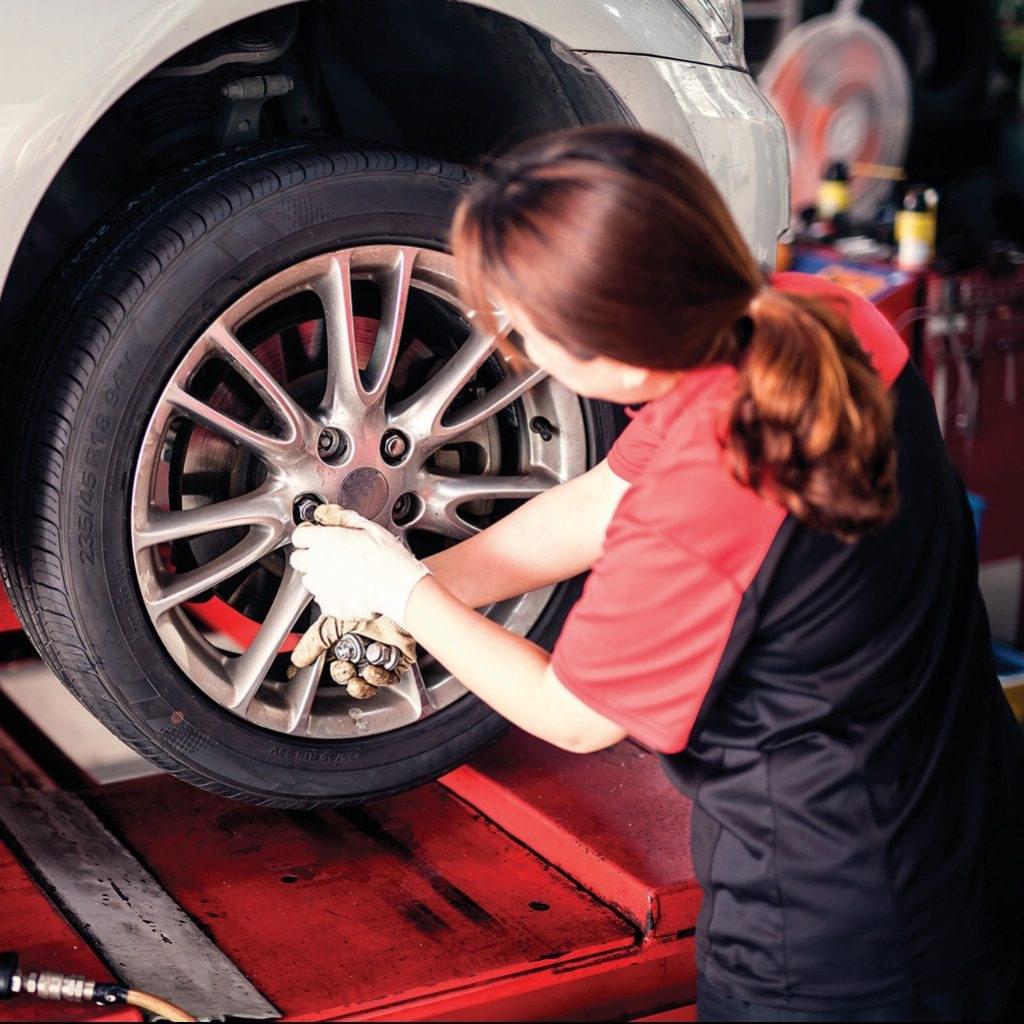

As fall approaches, so does the opportunity for fall vacations, short road trips, and continuous commutes to work. Whether you’re driving a few miles down the road in Lake Wales, all the way to Orlando, or up to the mountains to see the fall leaves, keeping your vehicle in good shape is key in considering safety. One of your vehicle’s most important safety components? The tires. Higher pavement temperatures combined with normal wear and tear – plus added traffic volume due to travel and population increases – can contribute to potential safety hazards.
Before you head out on the road, consider these tips to stay safe on the road.
- Check Tire Pressure Regularly
Low tire pressure can lead to poor handling and gas mileage as well as excessive wear and overloading. Before any long trips – and at least once a month – check your tires’ air pressure, as bumps and turns can lead to air loss. Temperature changes also affect air pressure. For every 10 degrees in ambient temperature change, air pressure changes 1 pound per square inch (PSI). - Be Tire Tread Aware
The amount of tread on a tire, or tread depth, determines safe stopping distance. The more tread on the tire, the better it can grip the road and stop in a shorter distance. To check tread depth yourself, stick a penny upside-down in a tread groove. If President Lincoln’s head is visible, your tires are worn beyond safe-level recommendations and it’s time to replace. - Understand Tire Age Matters
As tires age, the rubber becomes harder and brittle, which can lead to higher risk for tire failure. Locate the DOT number stamped on the sidewall to check your tires’ age. Any tire that’s more than 6 years old should be replaced, but experts recommend replacing tires in sets of two or four to help ensure even wear. - Rotate Tires as Necessary
Tires should be rotated every 6,000 miles, or earlier if uneven wear develops, to maximize handling, traction and stopping power.- Keep Your Alignment in Check
Wheel alignments are an important part of auto maintenance that adjust the direction your tires point to prevent irregular wear and improve steering. If you notice uneven tread wear, your vehicle pulling to one side or the other, an off-center steering wheel while driving straight or steering wheel vibration, it may be time to have your alignment checked.
- Keep Your Alignment in Check
- Look for a Spare Tire
Check to see what equipment your vehicle has in case of a flat tire, as many newer vehicles no longer include a spare tire. Now, some models include tire inflation kits with puncture-coating sealants and air compressors or run-flat tires instead. In case of emergency, also make sure you have a roadside assistance plan, which can help with flat repair, replacement or a tow. - Avoid Overloading Your Vehicle
Hitting the road for a summer vacation means you’re likely towing equipment for your adventures and, of course, people. If you’re concerned about all that extra weight, check the manufacturer’s load recommendations to ensure you’re not putting too much stress on the tires. - Get Ahead of Weather
While checking and maintaining your tires, it’s a good idea to look at other accessories ahead of any weather you may encounter. Wiper blades should be replaced about every 12 months, or earlier if heavy streaking occurs during use.


